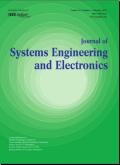Low-Complexity Signal Detection for Massive MIMO Systems via Trace Iterative Method
IF 2.1
3区 计算机科学
Q3 AUTOMATION & CONTROL SYSTEMS
引用次数: 0
Abstract
Linear minimum mean square error (MMSE) detection has been shown to achieve near-optimal performance for massive multiple-input multiple-output (MIMO) systems but inevitably involves complicated matrix inversion, which entails high complexity. To avoid the exact matrix inversion, a considerable number of implicit and explicit approximate matrix inversion based detection methods is proposed. By combining the advantages of both the explicit and the implicit matrix inversion, this paper introduces a new low-complexity signal detection algorithm. Firstly, the relationship between implicit and explicit techniques is analyzed. Then, an enhanced Newton iteration method is introduced to realize an approximate MMSE detection for massive MIMO uplink systems. The proposed improved Newton iteration significantly reduces the complexity of conventional Newton iteration. However, its complexity is still high for higher iterations. Thus, it is applied only for first two iterations. For subsequent iterations, we propose a novel trace iterative method (TIM) based low-complexity algorithm, which has significantly lower complexity than higher Newton iterations. Convergence guarantees of the proposed detector are also provided. Numerical simulations verify that the proposed detector exhibits significant performance enhancement over recently reported iterative detectors and achieves close-to-MMSE performance while retaining the low-complexity advantage for systems with hundreds of antennas.通过溯源迭代法实现大规模多输入多输出系统的低复杂度信号检测
线性最小均方误差(MMSE)检测已被证明可为大规模多输入多输出(MIMO)系统实现接近最优的性能,但不可避免地涉及复杂的矩阵反演,这带来了很高的复杂性。为了避免精确矩阵反演,人们提出了大量基于隐式和显式近似矩阵反演的检测方法。本文结合显式和隐式矩阵反演的优点,提出了一种新的低复杂度信号检测算法。首先,分析了隐式和显式技术之间的关系。然后,介绍了一种增强型牛顿迭代法,以实现大规模 MIMO 上行系统的近似 MMSE 检测。所提出的改进牛顿迭代法大大降低了传统牛顿迭代法的复杂性。然而,在迭代次数较多的情况下,其复杂度仍然很高。因此,它只适用于头两次迭代。对于随后的迭代,我们提出了一种基于痕量迭代法(TIM)的新型低复杂度算法,其复杂度大大低于牛顿迭代法。我们还提供了所提检测器的收敛性保证。数值模拟验证了与最近报道的迭代检测器相比,所提出的检测器性能有了显著提高,达到了接近 MMSE 的性能,同时在拥有数百根天线的系统中保持了低复杂度优势。
本文章由计算机程序翻译,如有差异,请以英文原文为准。
求助全文
约1分钟内获得全文
求助全文
来源期刊

Journal of Systems Engineering and Electronics
工程技术-工程:电子与电气
CiteScore
4.10
自引率
14.30%
发文量
131
审稿时长
7.5 months
期刊介绍:
Information not localized
 求助内容:
求助内容: 应助结果提醒方式:
应助结果提醒方式:


